Submachine gun: yesterday, today, tomorrow. CH 3. Second-generation submachine guns. MAS 38 vs. MP-35 and MAV 38A
Diagram of the internal device MAS 38.
Let's start with the French submachine gun MAS 38, which in the company Art. Etienne began to develop more in the 1935 year, but at the same time tried to "get away" from the design of the MP-18. And this is the creators of this sample turned out. It turned out to "leave." But create weapon, about which everyone would say, as something impressive, alas, no. Nevertheless, this sample of PP also went down in history and it can be compared with its main enemy at that time - the German Schmeisser MP-38 submachine gun.
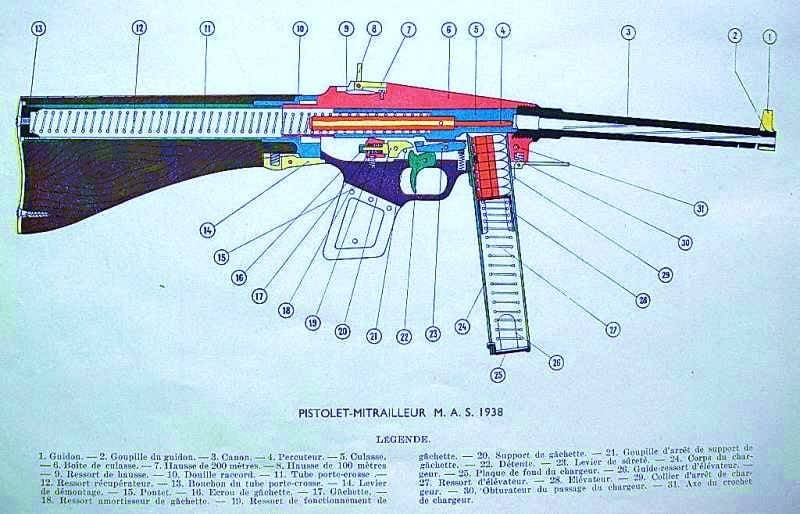
MAS 38
Since the weapon is made “from the patron” and it is precisely with its characteristics that is provided almost by 50%, then immediately it must be said that the French made a clearly unfortunate choice. They took their “national” cartridge caliber 7,65-mm “Long”, and it seemed to be good. But ... the cartridge was low-powered. And besides - it was produced only in France! But what about exports, what about ... "business"? It turns out that the French And - or did not count on selling this of its PP abroad, or B - for some reason thought that people would buy them directly with cartridges, and even better with a license to manufacture the latter at home. However, who needs a cartridge only for a submachine gun? Yes, pretty weak.
Interestingly, the design of the MAS 38 had a lot of original solutions, each of which seemed to be good in itself, but, combined into one, they gave as a result “not exactly” what was expected.
So, the shutter of this submachine gun had a long stroke. The long stroke is a long receiver, and the French wanted to get a compact weapon. How to be? The solution was found quickly. The box was made inclined, and passing into the butt, and it was in it that the return spring was placed. Beautiful in terms of technology solution. But ... a blow to the head with such a butt of an opponent could lead to a weapon breakdown and it was already impossible to repair it with our own forces. However, it was not particularly good to take this submachine gun to stun the enemy, except for the barrel, which did not have a casing and, moreover, was thin and long. That is, if he warmed up when firing, then obviously he shouldn't have grasped him. In general, it was quite problematic to hold these weapons in your hands. Handguards under the barrel was not. The receiving window of the store was right under the barrel. And if we assume that it is impossible to hold a weapon for the store, then ... for what could you keep MAS 38 at all? For just one pistol grip? Agree, not very convenient. Moreover, the same location of the receiver of the store was on the American Thompson, but there, under the barrel, first put an additional handle, and then the forearm. And no problems with its retention have never arisen. And here…
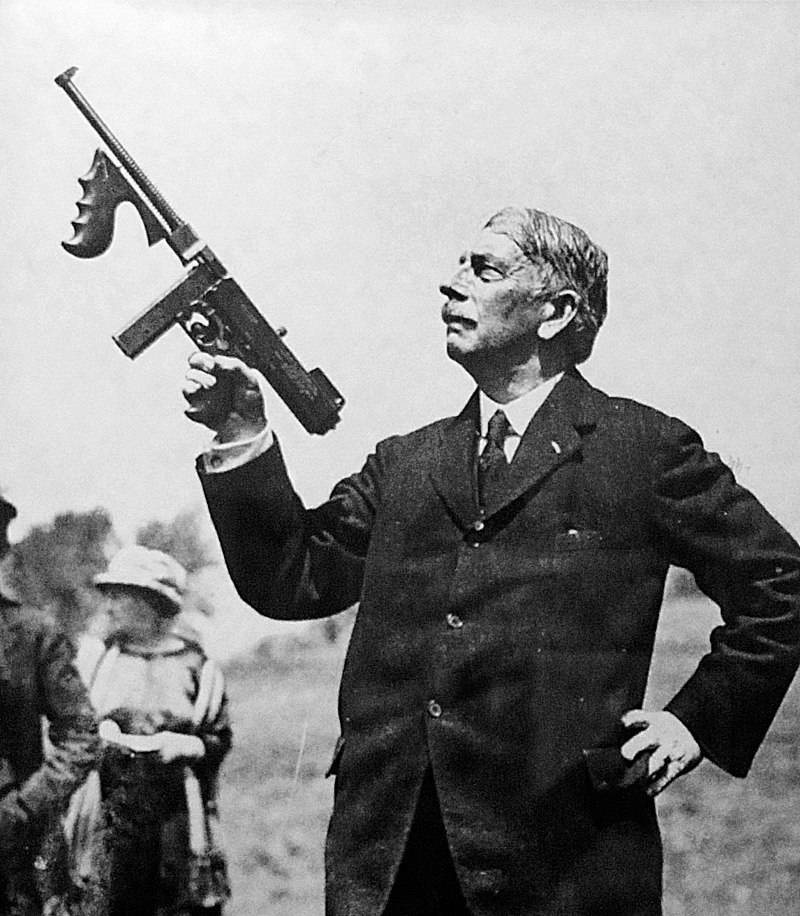
General John Thompson with his submachine gun. The handle under the barrel, which was absent in the French model, is clearly visible.
By the way, the store receiver had a cover that moved forward when it was required to load the weapon. And the lid is good! It prevented dust and dirt from getting inside the mechanism. But the cover moving forward is bad! As she again prevented to hold the weapon with her left hand.
The reloading handle was on the right and was not connected to the shutter, that is, it did not move when fired. But ... to use it in the absence of a reliable hold of the weapon with his left hand was not very convenient. It was more reasonable to arrange it on the left.
The weight of the MAS 38 turned out to be small - just 3,356. The rate of fire was 600 shots / min., And the speed of the 350 bullet was m / s, which was clearly not enough for such a caliber.
By the beginning of the war with the Germans, they did not have enough time to produce these PPs, moreover - the army refused from the first samples (and it is not surprising!) And they all went to the police. But with the beginning of the war, under the crash of the German MP-35 and MP-38, enlightenment came quickly and the industry immediately received a large order. Received ... but was unable to perform it! Then the French ordered the Thompsons in the United States, but they arrived too late to help the French army stop the enemy. But MAS 38 is still produced. In factories, in territory controlled by the Vichy government. Moreover, not only during the war years, but also after it up to the 1949 year. With him, the French soldiers fought in Indochina, but he did not find any special laurels there, and no one adopted him. Although not - except for the French army, the army adopted it ... Germany, where it was standardized under the designation Maschinenpistole 722 (f). The rear forces in France and parts of the defense of the Atlantic Wall armed them.
MR-35
By the way, the above mentioned German submachine gun MP-35 (which appeared just in 1935 year) was a sort of result of the improvement of the MP-18. The store was moved to the right side, and the reloading handle was placed at the back. It turned out completely closed receiver, where the dirt well, just could not get into it! And - along with the purely German workmanship, it was the MP-35 that attracted the attention ... of the SS troops, one of the peculiarities of which was the desire to differ in everything from the army! So they differed by adopting the MP-35, the release of which continued under difficult, tense wartime conditions, as Christopher Shant writes about this, right up to the year 1945! This is truly a god who wants to punish, and that deprives the mind. And, by the way, to filmmakers this is a direct hint - you want to show SS troops realistically - arm them not with Mr-38, but with Mr-35. Well, at least in the form of layouts! By the way, they are still in service with the police of various South American "banana republics". And it is not surprising, because most of their parts sharpened and milled from solid metal bars, turning whole mountains of metal into chips!
And it is not surprising that for the armament of the mass army of the era of total wars, the Germans themselves, the MR-35, for all their qualities, recognized it as inappropriate.
Another peer loser "Frenchman" and "German SS" became "Italian" - Italian submachine gun "Beretta" MAV 38A. It was also designed in 1935 year. Also adopted by the 1938-th. Designer Tullio Maregnoli. It seems to be nothing special in it: a cylindrical receiver, carefully made a wooden box with a slot for the magazine inserted from below, a perforated barrel casing, a reloading handle on the right. It seems to be all as usual and nothing special. But ... the main highlight of the design was ... excellent balancing. This weapon was just a pleasure to hold! Although each “automatic” was brought manually, the cost of producing the M38A was not too high, but on the contrary, the reliability and accuracy of shooting impressed everyone who dealt with this submachine gun. That is, it was a simple but very high-quality weapon!
"Beretta" MAV 38 / 42. Right view.
"Beretta" MAV 38 / 42. Left view.
When World War II began, the MAV 38A was “modernized”: they began to make the barrel casing stamped and welded. But this was the only fashion tribute to the full simplification of weapons. More was achieved only in 1944, when Italy had already withdrawn from the war, or rather, it was divided into the Allied-occupied South and the Nazis-occupied North. And it was there that the release of the Beretta began for the German army under the designations MP 739 (i) and MP 738 (i) - MAV 38 and MAV 38 / 42. On the last model, the forearm was shortened, the perforated casing was removed from the barrel, and at the end of the barrel they made two cuts immediately behind the front sight to reduce the tossing of the barrel upwards when firing. It is interesting that Maregnoli refused such a device as a translator of fire. Instead, he had two triggers — a rear one for firing bursts and a front for a single fire. The fire was fired from the open bolt. For some reason there were a lot of shops: on 10,20,30 and even 40 cartridges.
The Beretta M38 / 49 (Modello 4) of the 6913 th electronic security squadron on the exercises DISPLAY DETERMINATION '85.
Funny, but the Germans existed a sample of a submachine gun, similar to the "Beretta". He just appeared in 1941 and designed it just for Hugo Schmeisser, who has nothing to do with MP-38. But then, taking into account the wishes of the infantry, he designed the MP-41. Which, in essence, was a hybrid MP28 / II - from which he took a wooden bed with a butt, a brace and a trigger, and MP-40, from which he borrowed the barrel and the bolt box, the bolt itself, the return spring and receiver for store. It was also different from MP38 and MP40 in that it had two modes of firing: bursts and single shots. Wooden butt allowed to achieve higher accuracy of shooting. But in spite of this, the MP-41 Armaments Directorate of the German Army rejected, considering it unprofitable to change the MP-40 to the MP-41. And, nevertheless, the firm "Haenel" began to produce it, as it is considered, by the order of Romania. In addition to this country, they were delivered to Croatia and some other allies of Hitler in the Balkans. In the German army, MP-41 was not officially in service, but in the very last months of the war they began to arm Volksstrumists. Total firm "Haenel" was produced 27500 submachine guns M-41. 26000 pieces are in 1941 g, and at the end of 1944 are still 1500. Moreover, it was possible to produce the MP-41 in the number of 100 submachine guns per day, but the MP-40 - 300. And it turns out that MP-41 was exactly three times more difficult for the manufacturer than the MP-40 and clearly was not suitable for total war!
MP-41 with the magazine removed.
Trophy "Beretta", which fell into the hands of the Anglo-American allies, enjoyed the fame of reliable and accurate weapons, and they willingly used them in battle. Although it happened that the soldiers complained about the insufficient capacity of the store in those cases, if the shops they came across on 10 and 20 cartridges.
To be continued ...
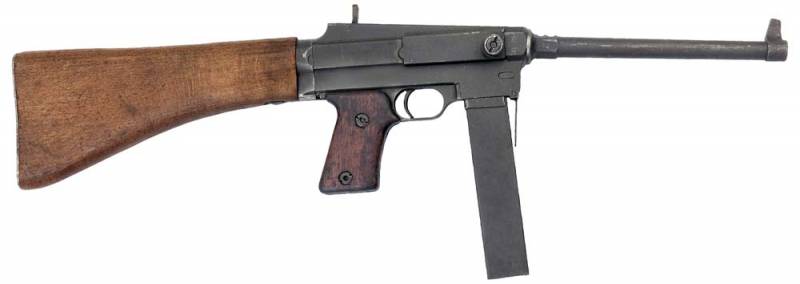

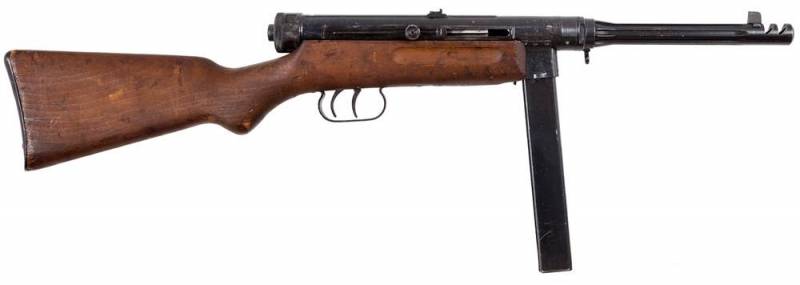
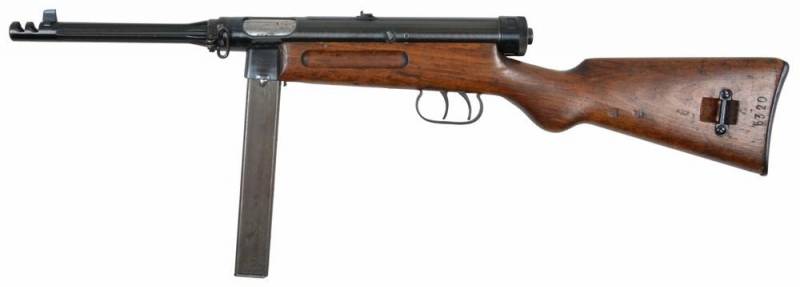
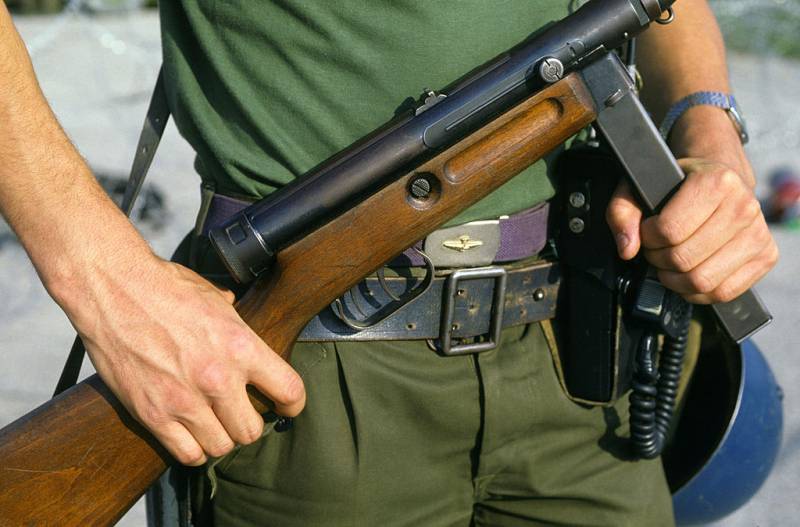

Information